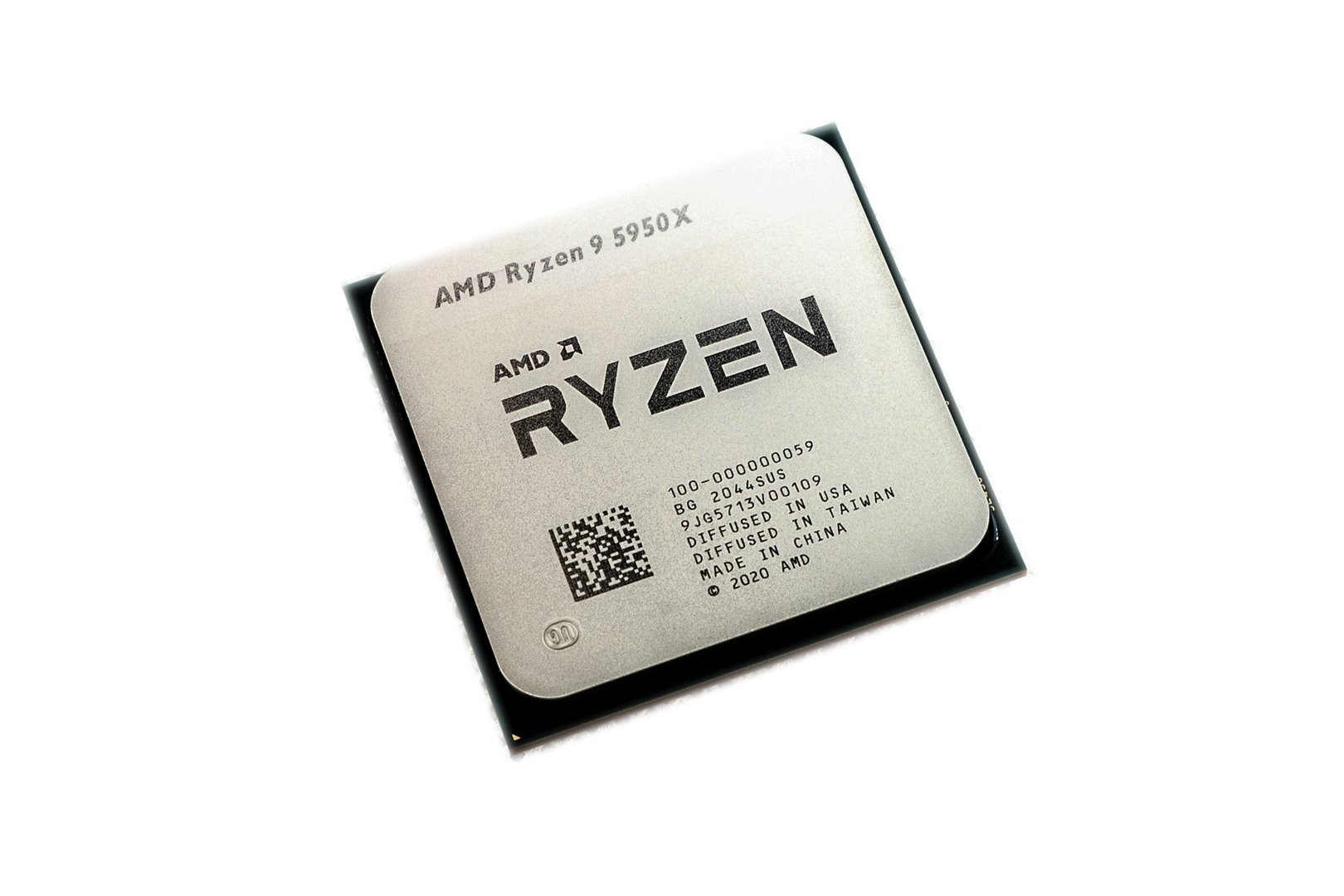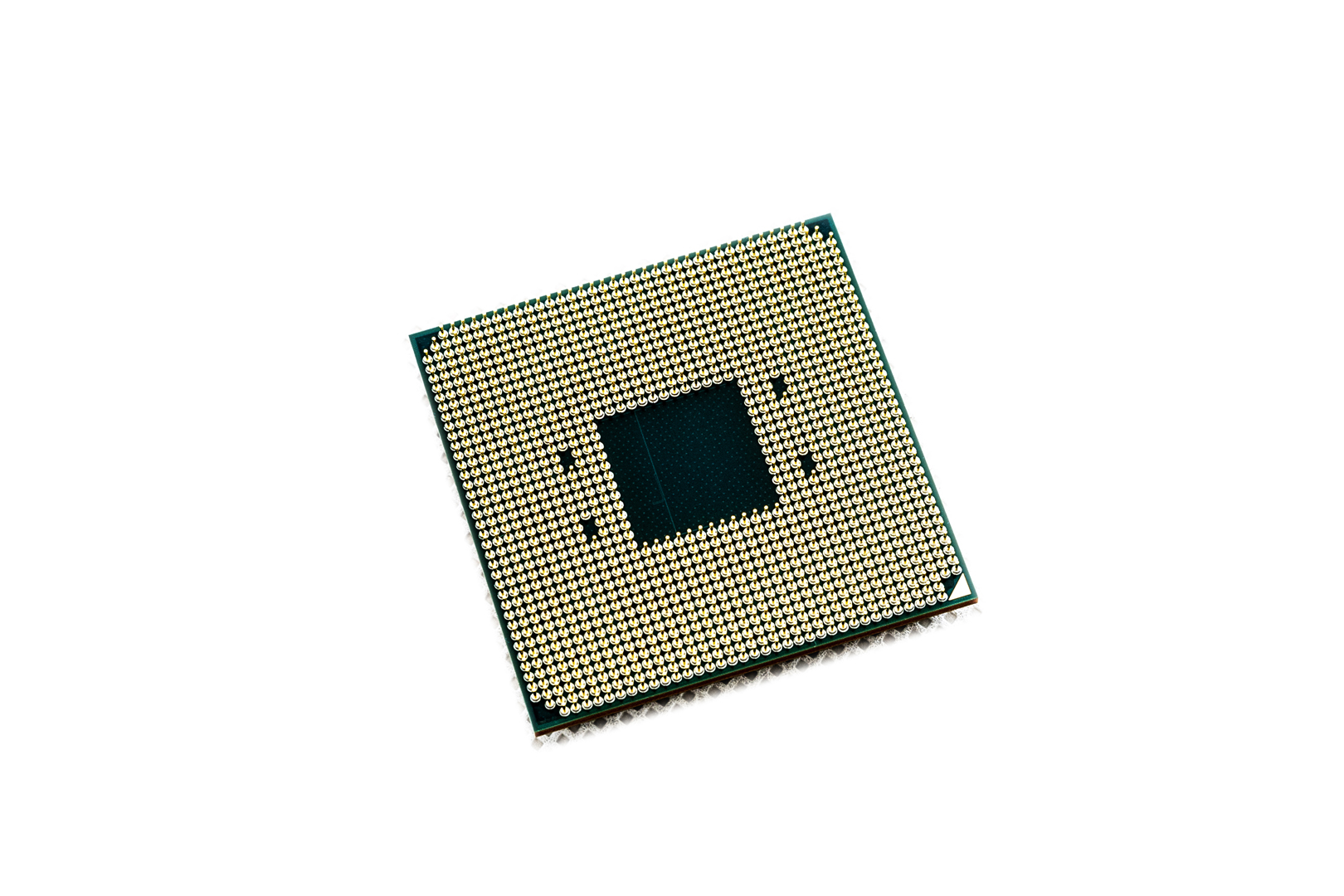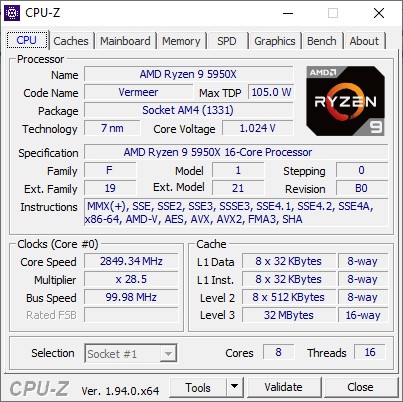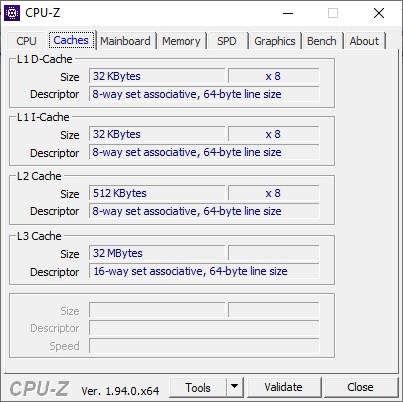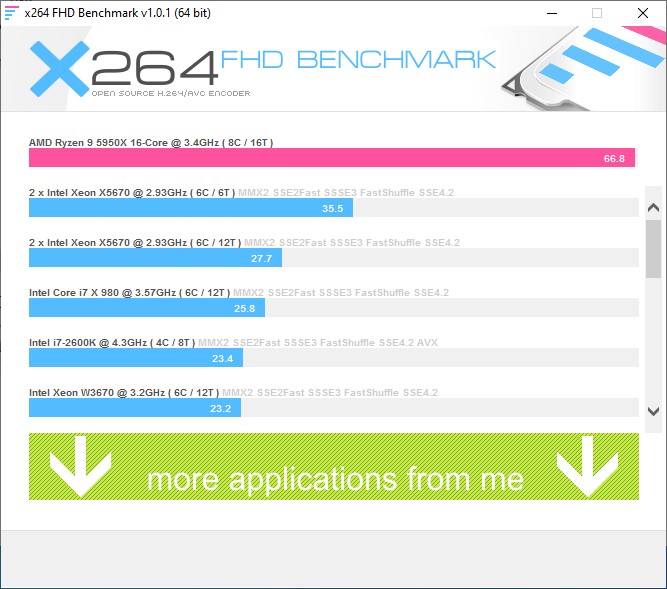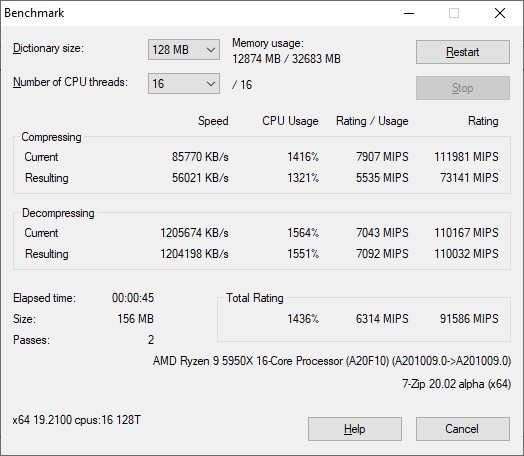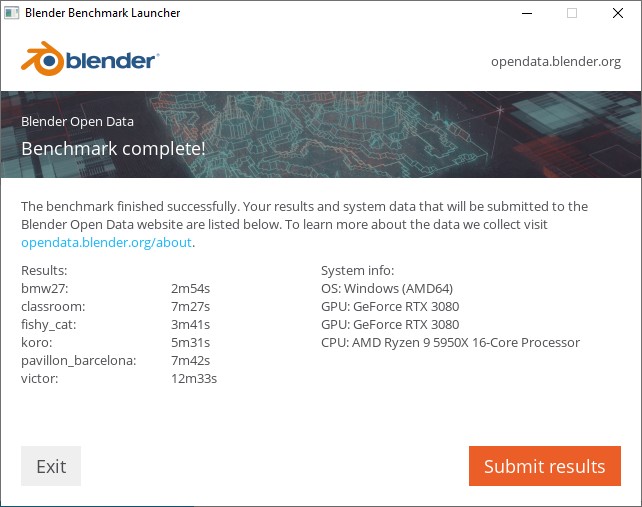AMD has already made good on its promise to release the new generation of desktop processors based on the Zen 3 architecture in 2020, with four different models ranging from 6 to 16 cores in the debut lineup to suit different budgets. But when we mention the Zen3 architecture, we have to talk about the previous Zen2 architecture.
AMD’s Zen 2 architecture launched last year basically tied or even slightly exceeding Intel’s Core desktop processors in terms of IPC, and the gap between the two’s gaming performance is actually very small. This year Intel launched the 10th generation Core desktop processor Comet Lake to fight back, but everyone’s reaction after seeing Comet Lake is probably the same as mine: this is it? Simply put, Comet Lake is the product of adding two cores to the previous generation of Coffee Lake processors, then increasing the power limit upwards and improving the heat dissipation to push up the frequency, but the CPU core is still the same as Skylake five years ago, in short, the IPC has not been upgraded for five years. With Intel stagnant for a few years, AMD is catching up, official sources say the new Zen 3 compared to the previous generation has a 19% IPC increase, gaming performance is a great improvement.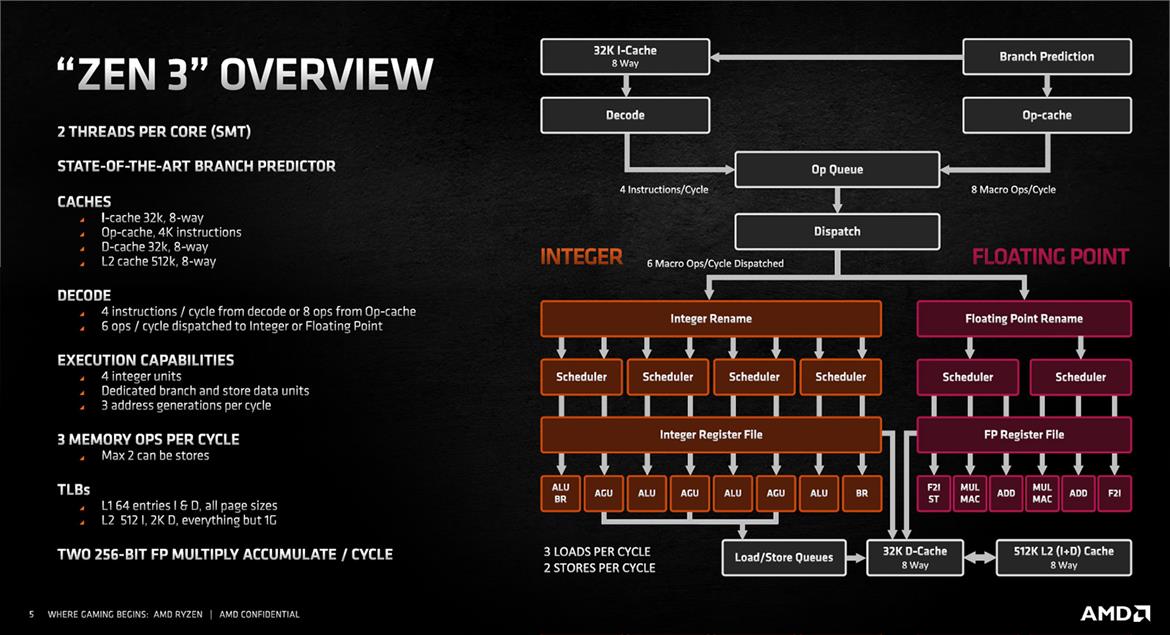
Regarding the changes in ZEN3 compared to ZEN2, simply put, a series of architectural and structural changes, combined with the merging of two 4-core CCXs into one 8-core CCX, have doubled the available cache per core and reduced latency, resulting in an average 19% increase in co-channel performance/IPC for the ZEN3 architecture compared to the ZEN2 architecture. In addition, although this is still TSMC’s 7nm DUV process, after more than a year of polishing, the process has gone up a level, the XT series launched in front is a test run, this time the frequency of ZEN3 has gone up a level, the actual test has broken through the threshold of 5G, Intel’s CPUs have no frequency advantage compared to it, plus the IPC is far worse, this year Intel should not be able to return.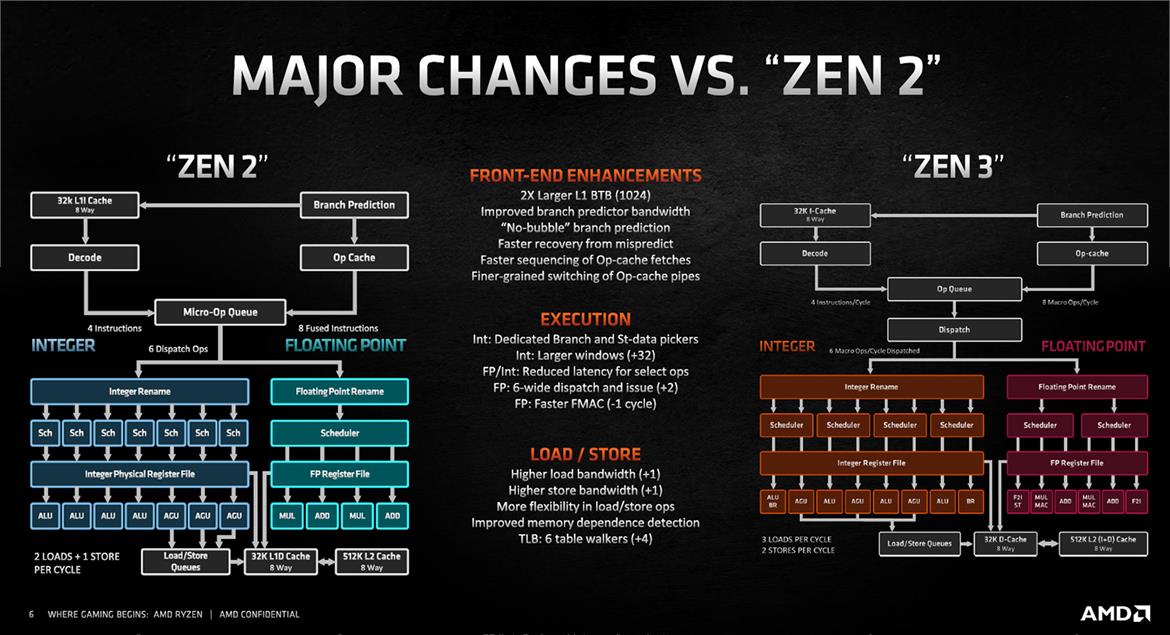
We received the high-end level of the Ryzen 5950X, so let’s dig in how the Zen3 series processors will shine after a year of polishing.
CPU Specifications
CPU Package Appearance
The outside packaging
The packaging of the Ryzen 5950X is not particularly different from its predecessor, following the same design concept and containing essentially the same graphics and colour scheme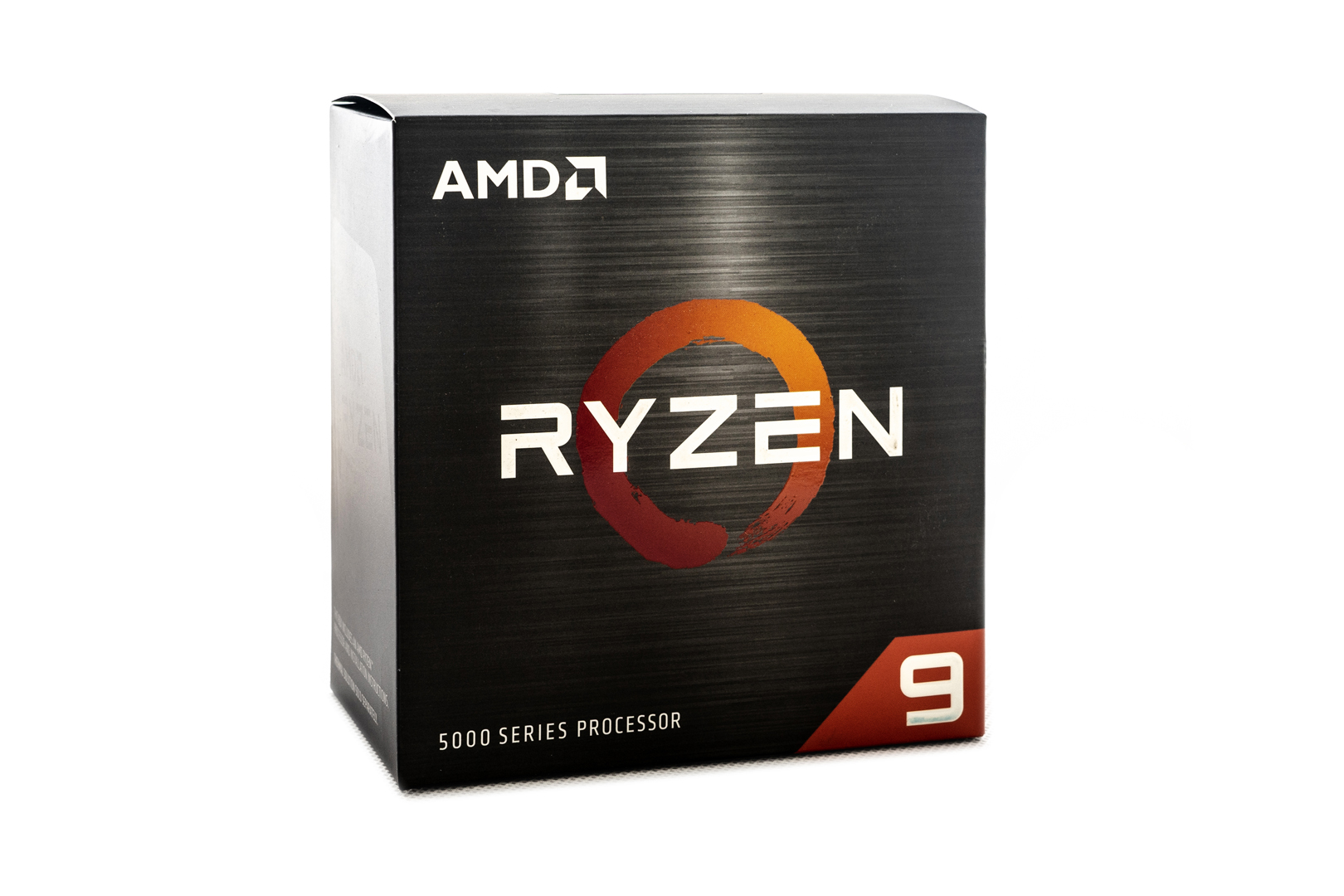
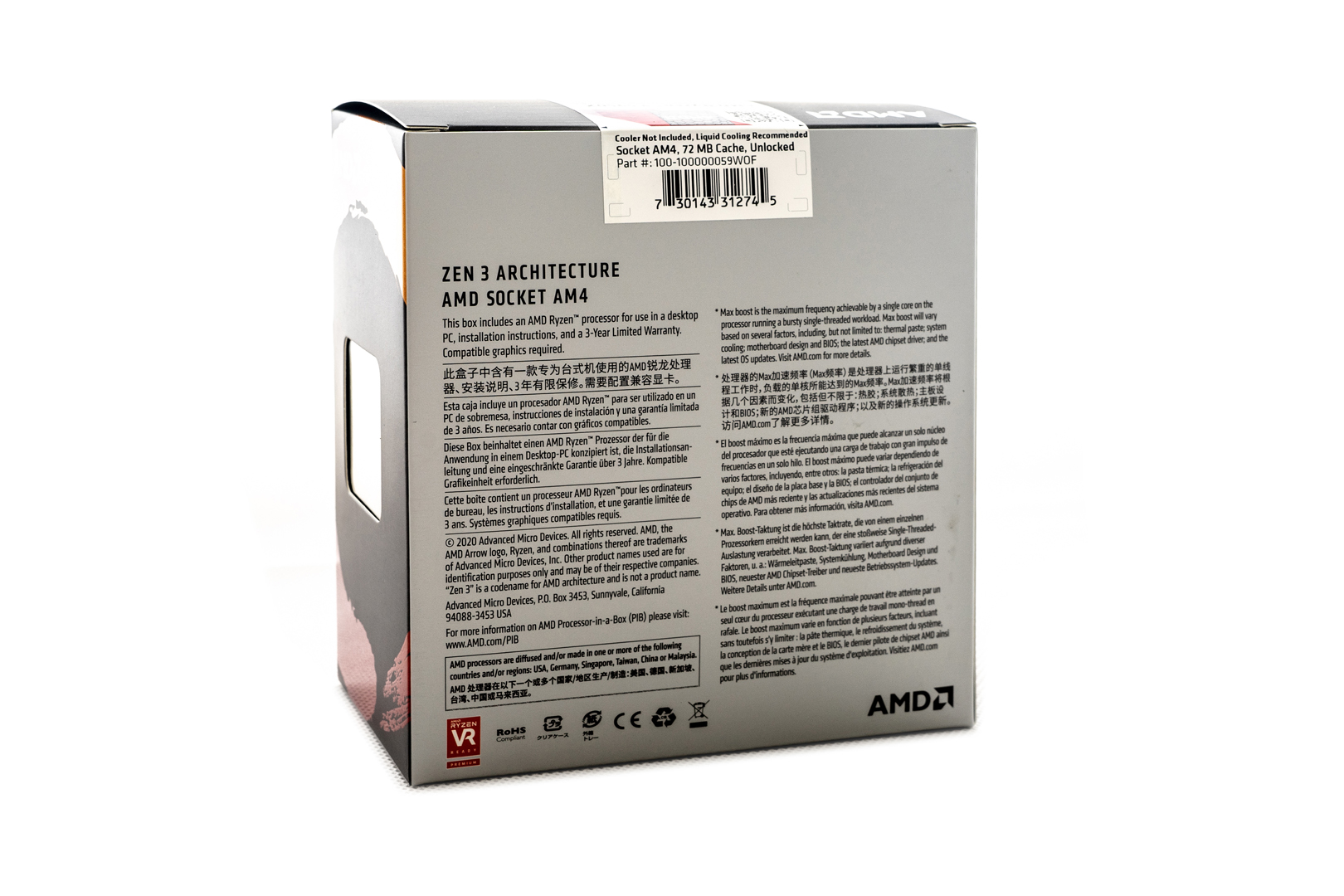
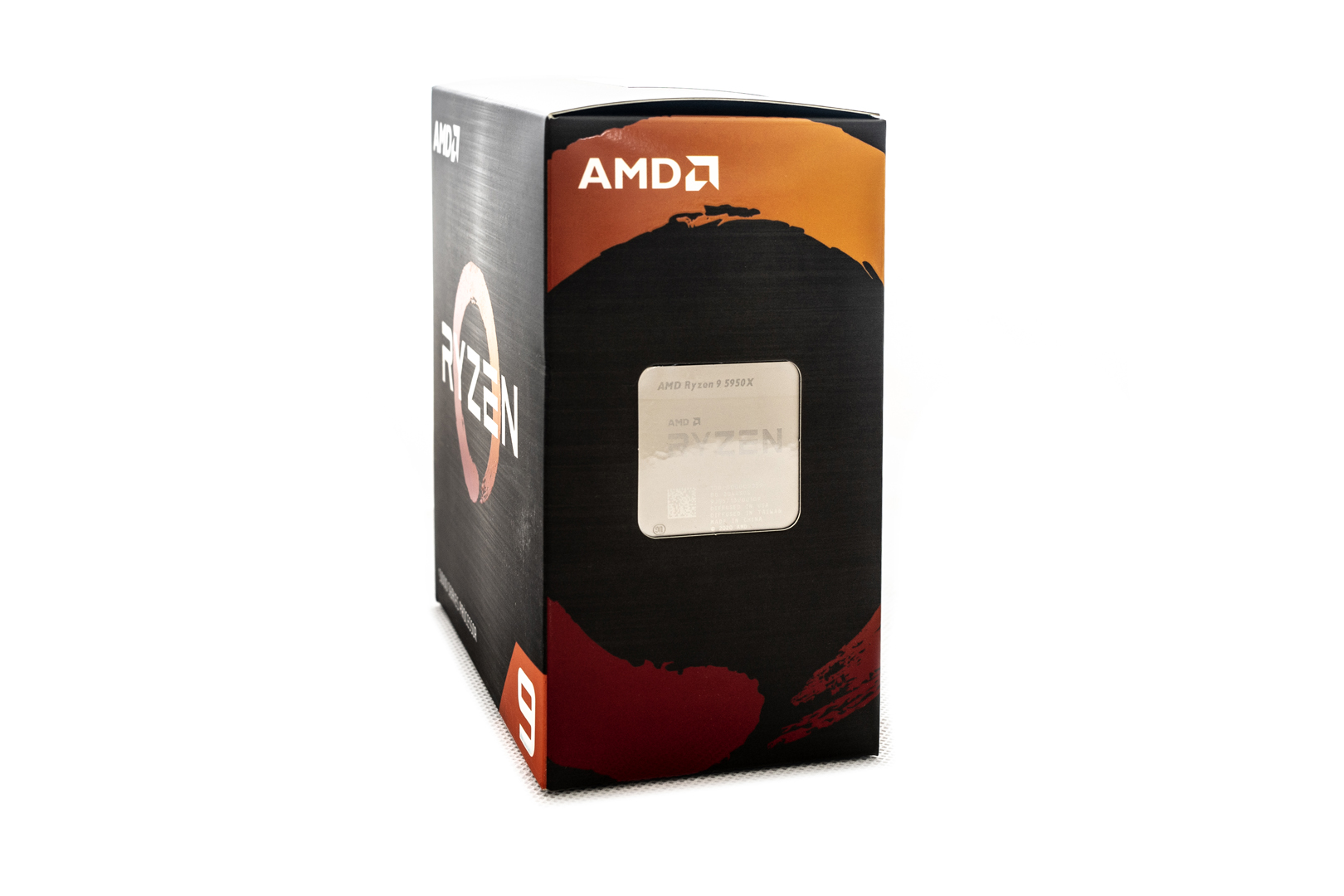
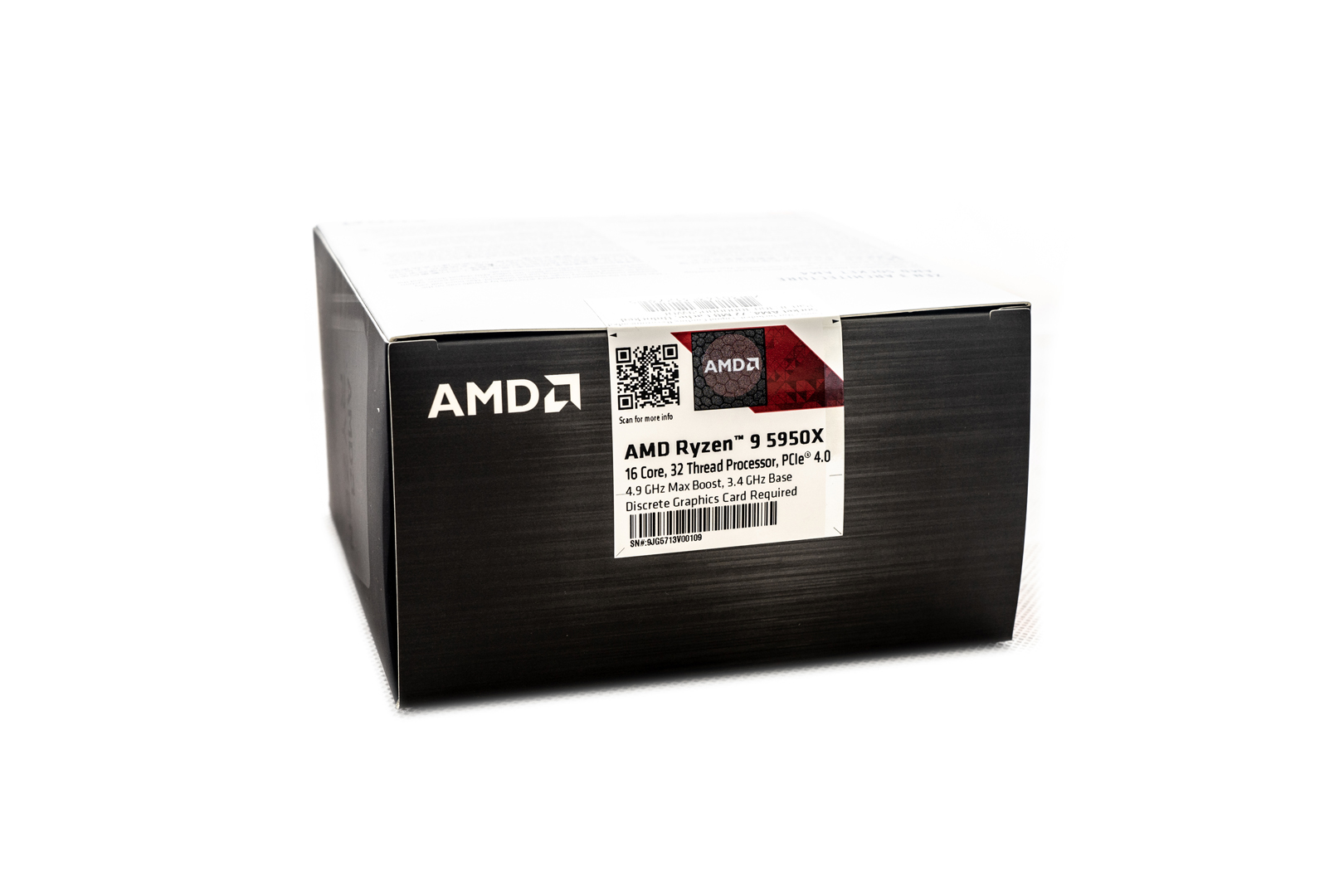
The box contains the CPU and Ryzen sticker. This time AMD didn’t offer their classic Wraith Prism CPU cooler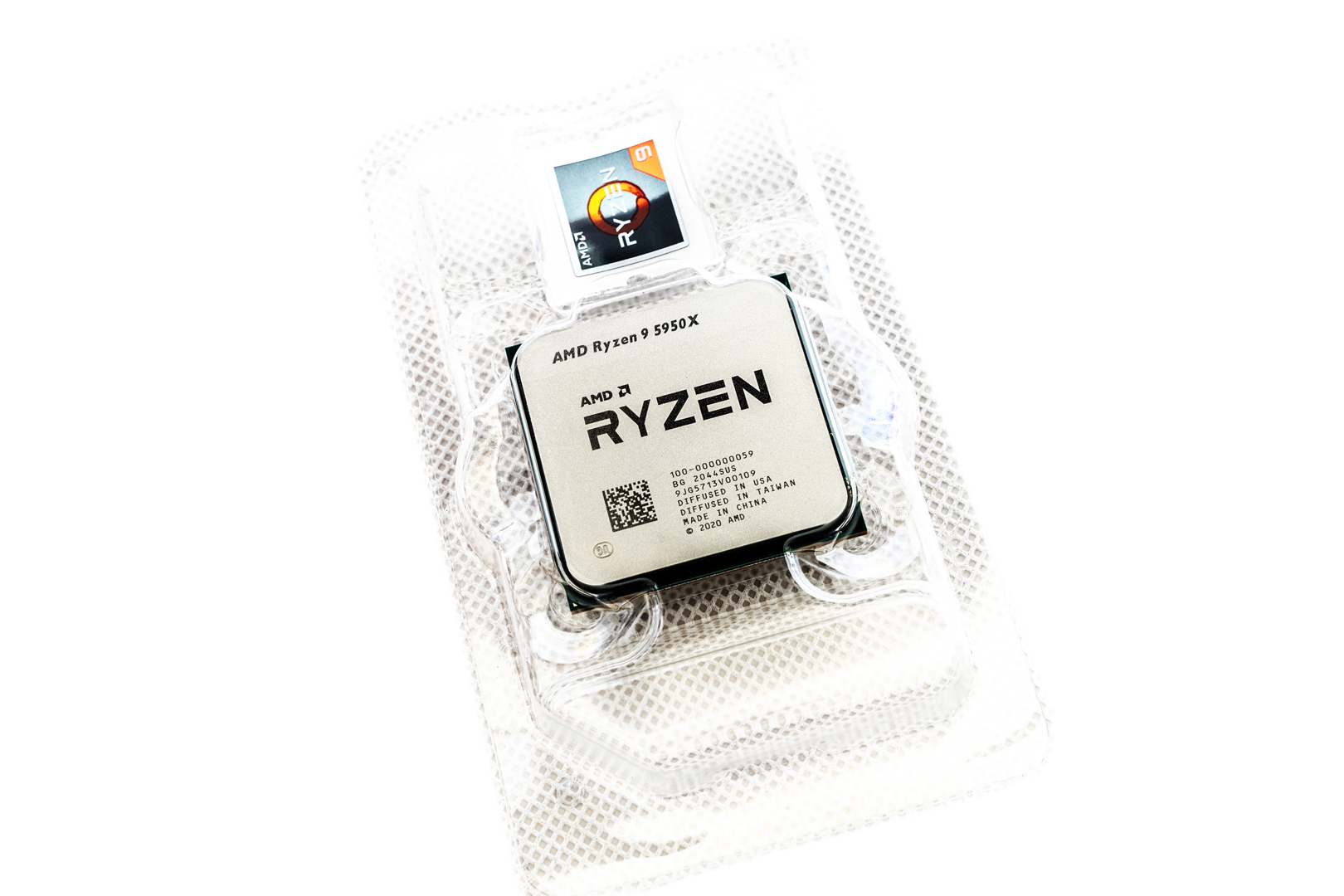
The motherboard that we are using for our tests will be the ROG Crosshair VIII Dark Hero from ASUS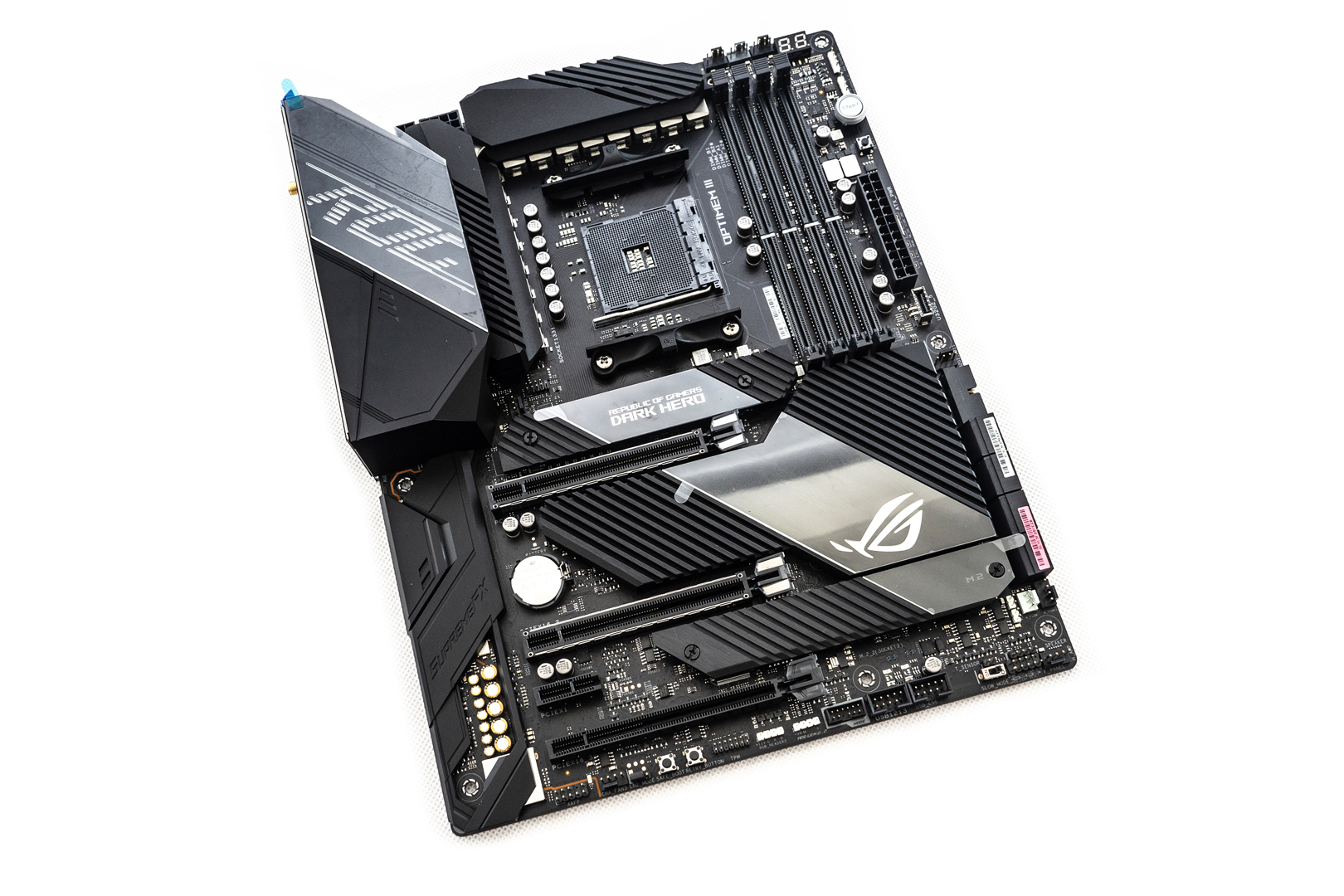
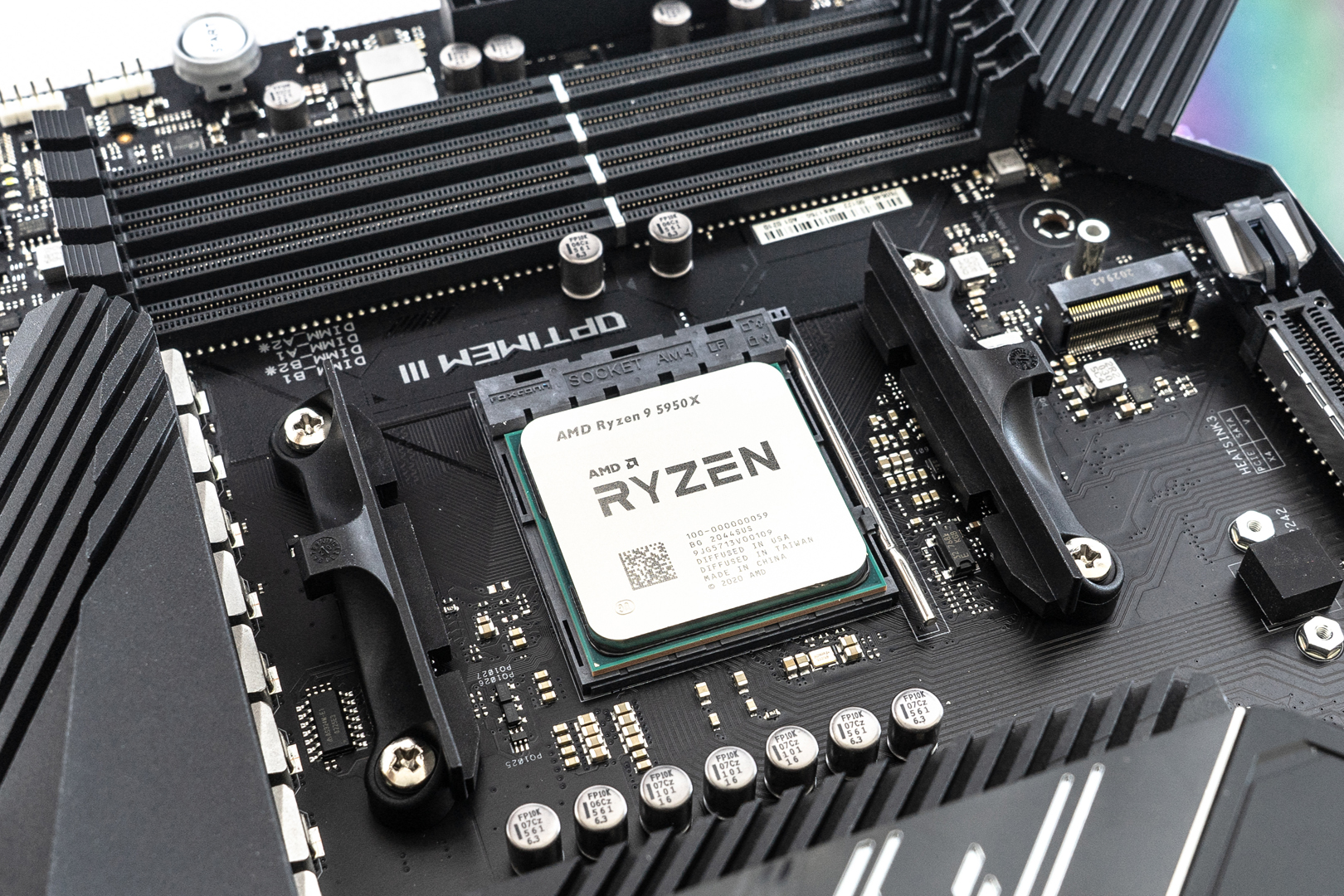
Please refer to our previous ASUS ROG CROSSHAIR VIII DARK HERO article for the unboxing of the motherboard
Benchmarks
The AMD Benchmark platform details:
CPU | AMD Ryzen 5950X
MTB | ASUS ROG Crosshair VIII Dark Hero
RAM | G-Skill Trident Z RGB 32G (2 x 16G) 4000 C16
SSD | Samsung 980 Pro 1TB PCIe Gen4
VGA | ASUS TUF RTX 3080 OC
COL | AMD Wraith Prism
The INTEL Benchmark platform details:
CPU | Intel COre i9-10900K
MTB | ASUS ROG Maximus XII Hero
RAM | G-Skill Trident Z RGB 32G (2 x 16G) 4000 C16
SSD | Samsung 980 Pro 1TB PCIe Gen4
VGA | ASUS TUF RTX 3080 OC
COL | Coolermaster MasterLiquid ML240L
CPU-Z Benchmark, compare with i7-10850K’s reference, single-core speed is better, but falls behind in the multi-core score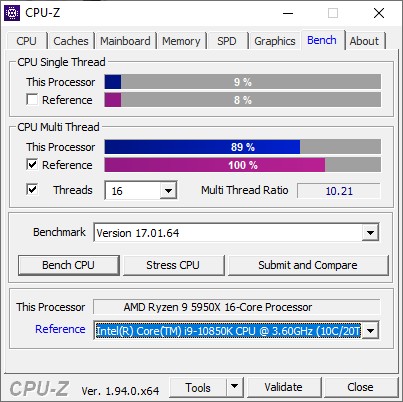
Cinebench R15 single and multi-core result. The results are significantly ahead of the Intel 1185G7, but since the 1185G7 is a mobile CPU, the figures are for reference only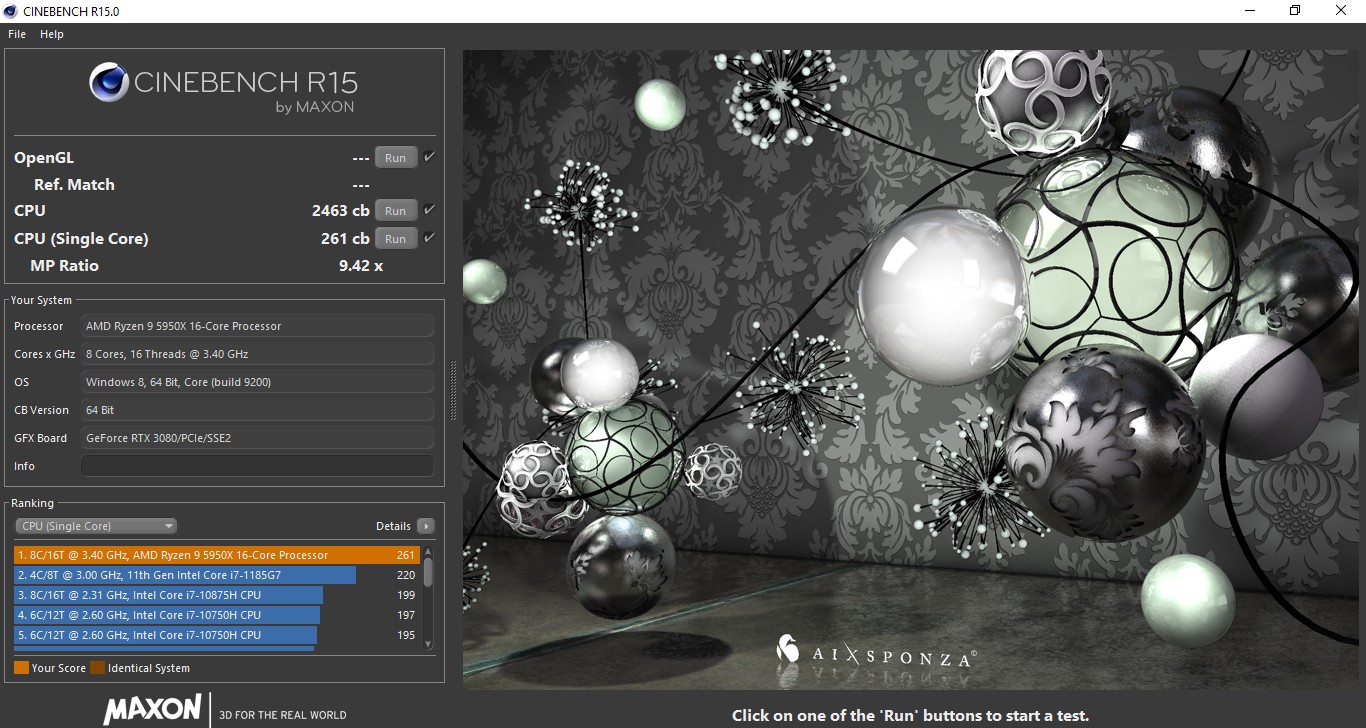
Cinebench R23 single and multi-core result
The R23 single/Multicore was incorrectly displayed during the test
The actual score should be Single-core: 1689 | Multi-core: 28723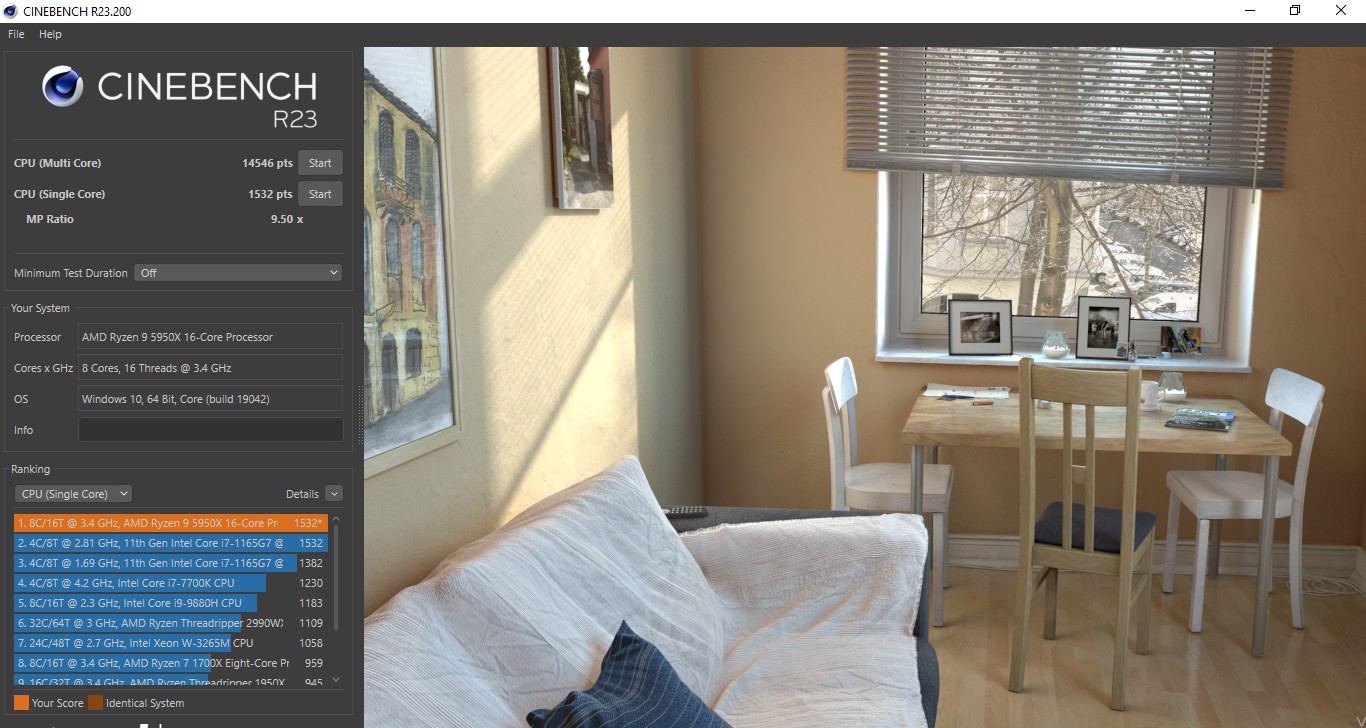
Gaming tests
Gaming tests are the main focus of the Ryzen 5000 series processors, and the fundamental reason why AMD is called a “productivity tool” rather than a gaming CPU is the lack of single-core performance. But that curse has finally been broken, as the 5950X easily beat its rival i9-10900K in many games we tested, and sometimes was significant.
This is not only due to AMD’s Zen3 architecture, but also a more direct boost from TSMC’s 7nm technology, while Intel is keeping focused on 14nm with so many ‘+’s technologies on top of the 11th Gen Core, trying to compete with AMD by neutering the core count to disguise the increase in main frequency, we can foresee that the heat and power consumption of the 11th Gen desktop CPUs will definitely not be average any more. We don’t know if anyone has a sense of immediacy, this situation is like when ATI released the Radeon 9000 Series in September 2002, performance crushed Nvidia’s NV20, while Nvidia released the NV30 Series graphics card in November of the same year but for some reason it was delayed until January of the following year, and performance? The FX5800 Ultra is really a black history for Nvidia.
we also tested the CPU temperature when under full load by using AIDA64, the average temperature of the 5950X is around 83°C, and thanks to the Zen3 architecture, the overall power consumption of the 5950X is only around 150W, far better than the 250W of the Intel i9-10900K.
Summary
History is always strikingly similar. Since the last time AMD CPUs outperformed Intel in absolute single-core performance, we have to go back more than a decade to the Athlon 64/X2 and were then left behind in Intel’s Core series. We also watched as the highest cores of the mainstream platform were firmly limited to 4 cores starting with the Core 2 Quad in 2008, and Intel, which had no competition, began a long career of toothpaste squeezing, but in the short three years since Ryzen appeared, Intel has been forced to release the multi-core i9 and the number of cores has risen from 4 to 10 cores.
Today, the last piece of Intel’s shame, single-core performance has been torn off, and AMD has regained the crown of absolute single-core performance, these Zen 3 processors will easily win against the rival Comet Lake, but the real enemy is Intel’s Rocket Lake, which will be launched in the first quarter of next year, and it is estimated that the gaming performance will be improved due to the change of the architecture. However, AMD is almost certain to win in multi-core performance, after all, Rocket Lake has only 8 cores at most, so 16 cores against 8 cores should be a no-brainer. So, how will Intel come back from its total defeat? We’ll see.
EPIC PC RATE SCORE: CPU 93/100
EPIC REWARD: EPIC RECOMMENDED, EDITOR’S CHOICE & EXTREME POWER


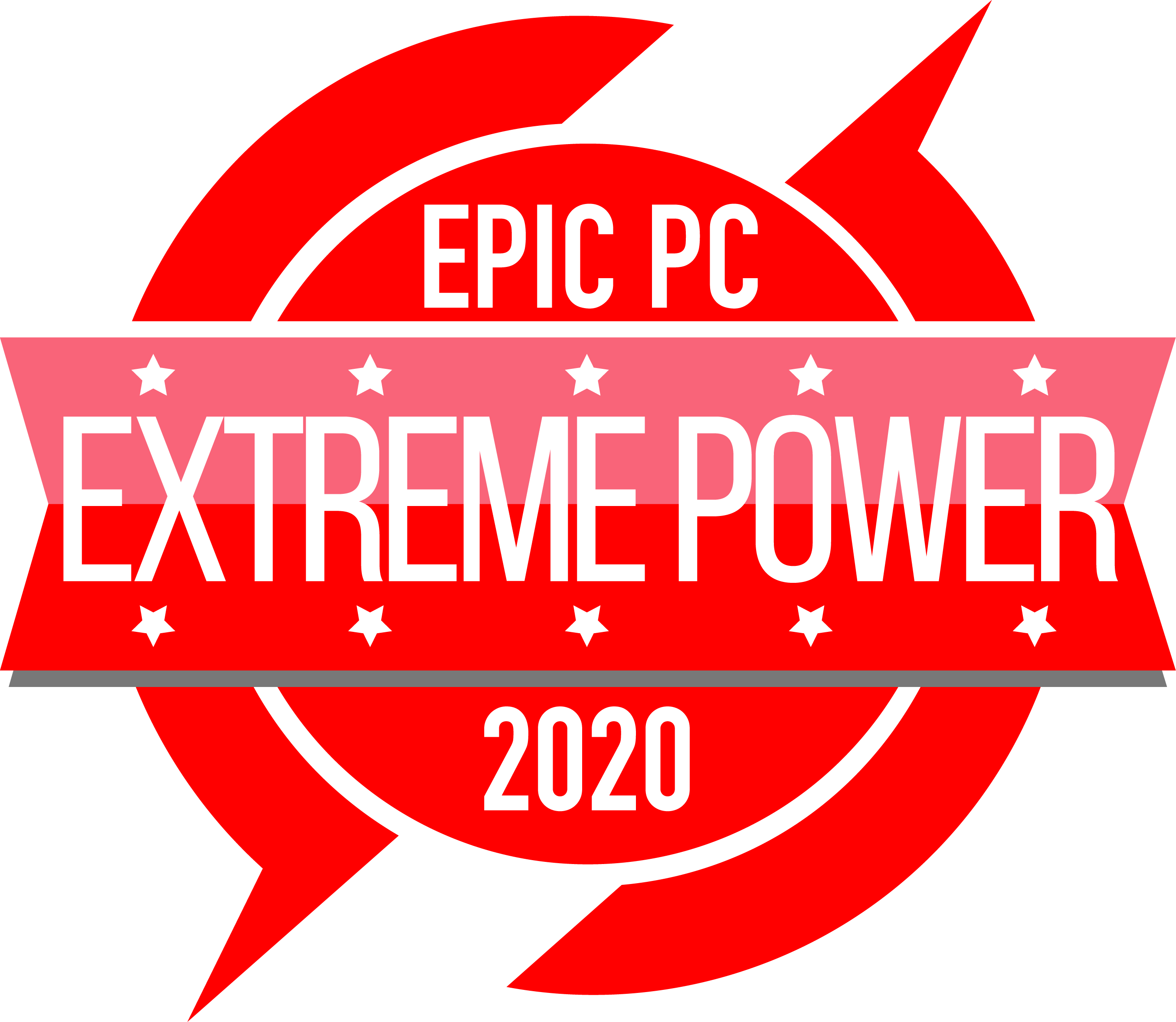
AMD Ryzen 9 5950X OFFICIAL WEBSITE: HERE


